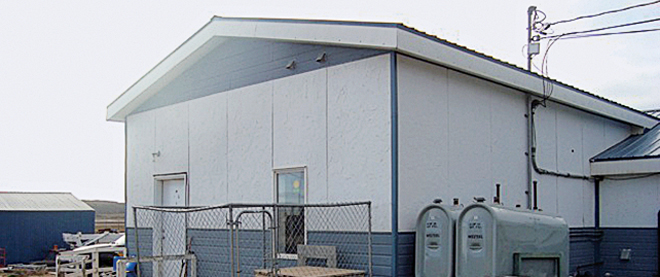Dogs gone
When Janine Budgell, co-founder of the Iqaluit Humane Society (IHS), looked at her calendar for August, she balked. With only eight volunteers to offer their spare hours to feed, walk and clean up after 11 dogs, Budgell needed help. She put up posters, sent emails and “pleaded and begged,” she says, but “it didn’t work out.” The day Budgell had dreaded since IHS opened in 2008 had arrived: Nunavut’s first and only animal shelter would close.
Share

When Janine Budgell, co-founder of the Iqaluit Humane Society (IHS), looked at her calendar for August, she balked. With only eight volunteers to offer their spare hours to feed, walk and clean up after 11 dogs, Budgell needed help. She put up posters, sent emails and “pleaded and begged,” she says, but “it didn’t work out.” The day Budgell had dreaded since IHS opened in 2008 had arrived: Nunavut’s first and only animal shelter would close.
On Aug. 9, once the dogs were adopted in Iqaluit or flown to shelters in Ottawa and Quebec, Budgell locked up. That evening, she went to city hall and told the mayor and councillors about the obstacles plaguing IHS: too few shelter personnel, and not one veterinarian living in Nunavut. Insufficient funding—the annual budget of $50,000 came from puppy washes, bake sales and bingo nights. An inadequate facility: at the shelter’s peak, 31 dogs were “jam-packed” in a one-bedroom apartment donated by the city. And rampant animal overpopulation. Nunavut, says Budgell, has “the highest incidence of reported dog bites to humans of anywhere in Canada. Extra dogs on the streets isn’t going to reduce that.”
Stray dogs have long been a problem in Iqaluit. Spaying and neutering only happens twice a year, when a vet comes to town. Even then, it’s at a cost that many owners can’t afford or refuse to pay. And breeding “southern” dogs such as terriers, beagles and poodles with traditional huskies or wolves has created a population unfit for the North—which owners realize too late. “They’re referred to as ‘Iqaluit specials,’ ” says Budgell, and lack “double-fur coats and blubber deposits.”
Many dogs wind up at the city pound, where they’re held for 72 hours to be claimed by the owners or adopted. More often, though, they’re shot to death, since no vet means no lethal injection. Or, if IHS had room, the dogs went there. In the three years it existed, the shelter received 1,200 animals—mostly dogs, but also cats, iguanas, guinea pigs, hamsters, turtles and cockatoos. IHS provided basic nutrition and medical care, and found new owners or sent animals south.
Budgell’s report also outlined the ideal future for IHS. Two full-time staff to offset the volunteer shortage. Additional space to quarantine sick animals. Budgell even asked the city to revise rules governing the pound, which doesn’t require owners to vaccinate, spay or neuter animals; the shelter does. “Iqaluit’s animal control bylaw is dated and conflicts with the IHS’s mandate,” Budgell told city council. “Unless we work together?.?.?.?animal overpopulation, dog attacks, irresponsible pet ownership and disease will continue to grow.”
That pandemonium may be thwarted yet: the city is forming a working group with IHS to discuss more funding and space, but it’s unclear if or when the shelter will reopen. Mayor Madeleine Redfern says the group will consider a subsidized program for spaying and neutering dogs, and discuss Greenland’s policy that bans the importation of dogs that aren’t spayed or neutered unless for special breeding. For now, the city will keep taking animals to the pound to be claimed, adopted or shipped south, but more likely shot.
In Nunavut, where there are many unmet human needs, worrying about animals might seem misguided, admits Budgell. But as a foster parent of four, she believes the issues are related. “The approach to healing and rehabilitation needs to be a wholesome approach that includes community safety and wellness,” she says. “Animal control is part of that.”